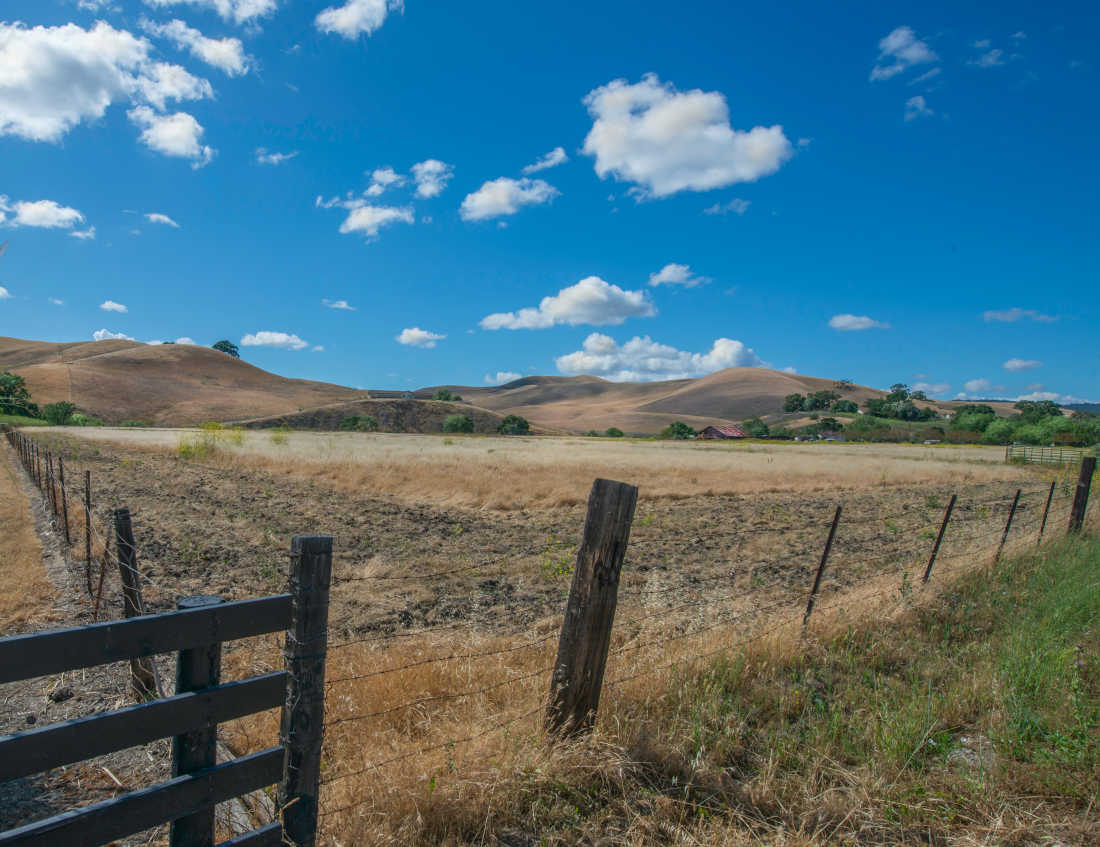By: Randy Tucker
Dick Pfister introduced himself to me after I coached my first football game for the Lusk Tigers in September 1980. He was an unassuming Niobrara County rancher who had moved to town a few years before.
With his worn felt hat, and one pant leg stuffed in his right boot and the left one over the top, he looked like a hundred other old ranchers I’d known. Dick’s down-to-earth nature hid his vast landholdings and cattle operation a few dozen miles north of Lusk.
Pfister Livestock owned a lot of land, about 21,000 acres, and thousands of cattle, but you wouldn’t know it from talking to Dick.
His operation was mostly in Wyoming, but his ranch spread into northwest Nebraska and southwest South Dakota, too.
I made it a point to learn his story one Wednesday evening at “Men’s Night” at the Niobrara Country Club. After a great rib steak and a couple of cold ones, Dick told me a few stories of his early life as a Marine Corps officer in the South Pacific working with an engineering unit. The stories of dropping a shovel, grabbing an M-1, and diving for cover from surprise Japanese mortar attacks were riveting.
As a history major, just out of the University of Wyoming, these dinner discussions with a man who had lived through those trying times were fascinating.
I asked permission to hunt mule deer on his place and took a nice 4×5 buck with a single shot at 140 yards with my Remington 788. It was my first buck deer, and I still have the tanned hide. Dick had a couple of large irrigation ponds stocked with rainbow trout. He didn’t let many people fish there, but he gave me permission. Trout are rare on the edge of the Great Plains in eastern Wyoming, but his ponds were great in the summer and through the ice.
One Wednesday night, Dick asked me and a couple of other young coaches out to the ranch for a branding. There are two types of brandings in cattle country; the first is a social branding. You can tell a social branding by the buffet, kegs of beer, and the 50 wary calves waiting to be “worked” by the often hundreds of people in attendance.
There was nothing social about the one Dick had invited us to attend. He paid $50 for a day’s work, and we earned every penny.
An actual branding, as opposed to its party-style cousin, has 500 or so calves, three or four cowboys on horseback, a handful of grunts (that’s where I came in), and the owner’s grandkids running the vaccination gun and getting ropes off the soon-to-be steer’s necks.
We arrived just before dawn, greeted by a huge breakfast of pancakes, fried potatoes, and rare sirloin steak.
As the sun broke over the nearby Sand Hills of western Nebraska, the fun began. It was mid-July, these calves were all born in December or early January. Technically, they were calves, but I couldn’t get my hand around the hock on many of them.
As the cowboys roped a calf, they pulled it over to me. I reached under, grabbed a leg on the opposite side, and flipped it over. I dropped on the calf like a wrestler, spun around, and pushed one of its hind legs with my foot while holding the other in my hand, or hands with these big boys. A kid pulled the rope off and the branding began.
As the day progressed, an older cowboy working the knife, turned the bull calves into steers in just a few seconds. As he took the testicles, he tossed them in a bucket. A pair of Blue Heeler pups snagged a few out of the air as he added to the growing pile.
The cowboys had a tray welded on top of the branding box. A propane tank kept the irons hot as we worked on the ranch east of Redbird, between Lusk and Newcastle. More specifically, between Hat Creek and Mule Creek Junction a couple of miles from the Nebraska line.
On a stump next to the branding box was a salt shaker. Throughout the morning, a cowboy would grab a couple of testicles, throw them on the red hot tray, turn them with his pocket knife, then use the knife as a skewer, add a little salt and eat a mid-morning snack.
It was as fresh as Rocky Mountain Oysters can be served.
It might seem a bit barbaric, but this was a taste (pun intended) of the old west. The names of the forgotten settlements nearby, Hat Creek, Red Bird, Cheyenne River, and Mule Creek just added to the flavor.
Teaching in Lusk brought my introduction to Rocky Mountain Oysters. You can order them at a few restaurants in Riverton, Lander, and Dubois, Wyoming, and they’re prominently displayed as a tourist attraction in Jackson and Cody just outside Yellowstone National Park on restaurant menus. They’re often used by locals to challenge their pilgrim friends who visit the area. The squeamish avoid them, but they’re pretty good when prepared correctly.
We finished working those 500 head around 7:30 that night. They fed us a great lunch back at the farmhouse earlier in the day. Dick gave each of us a crisp U.S. Grant 50 dollar bill, and a few ice cold beverages before we rode back home.
In retrospect, it was a trip to the old west at the branding, with just the slightest hint of modern civilization. For me, it was a defining point of the little cow town of Lusk, a snapshot of life over a century ago, from a more recent time, but neither exists anymore.
Randy Tucker is a retired history teacher and freelance writer from western Wyoming. He has a lifetime of experience in farming, ranching, hunting and fishing in the shadow of the Wind River Mountains. Contact him at [email protected].

